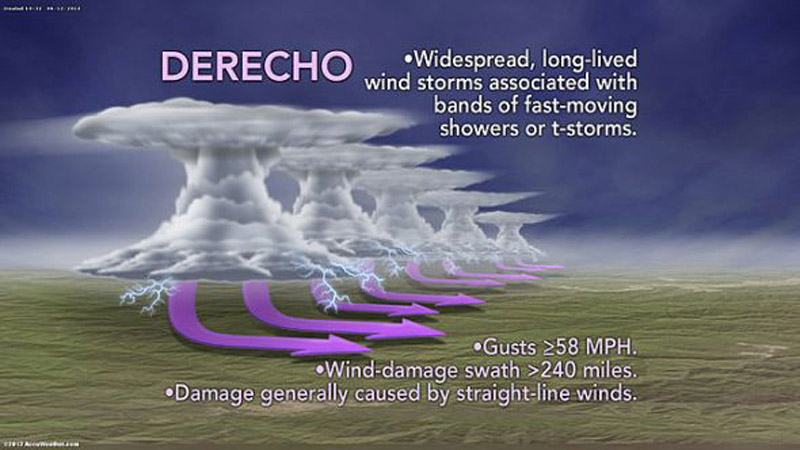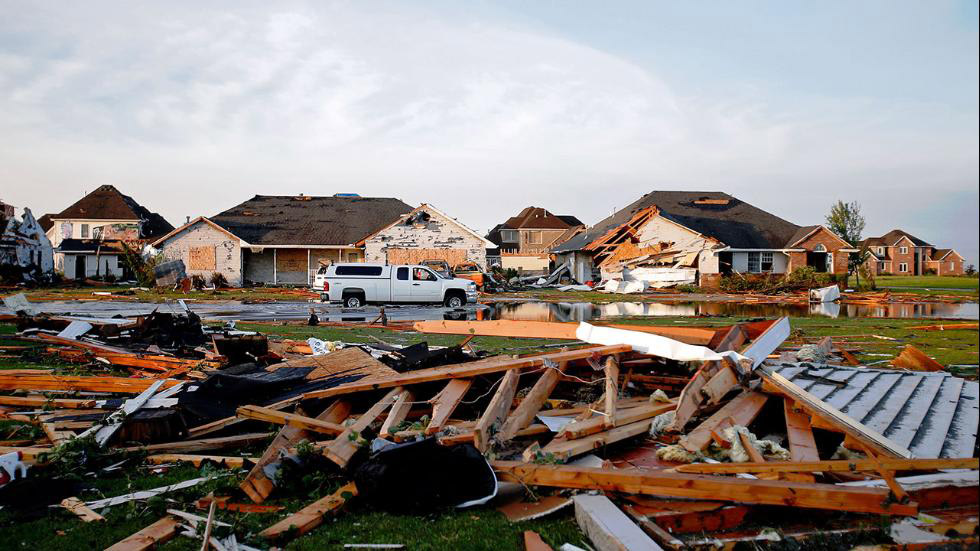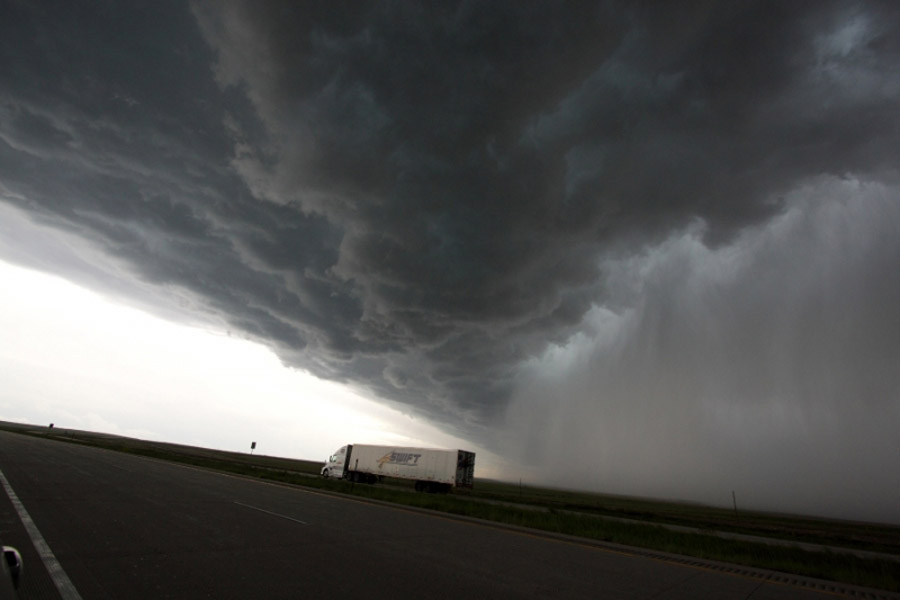Derechos
Definition of a derecho A derecho (pronounced similar to “deh-REY-cho” in English, or pronounced phonetically as “![]() “) is a widespread, long-lived wind storm. Derechos are associated with bands of rapidly moving showers or thunderstorms variously known as bow echoes, squall lines, or quasi-linear convective systems.
“) is a widespread, long-lived wind storm. Derechos are associated with bands of rapidly moving showers or thunderstorms variously known as bow echoes, squall lines, or quasi-linear convective systems.

Although a derecho can produce destruction similar to that of a tornado, the damage typically occurs in one direction along a relatively straight path. As a result, the term “straight-line wind damage” sometimes is used to describe derecho damage. By definition, if the swath of wind damage extends for more than 250 miles (about 400 kilometers), includes wind gusts of at least 58 mph (93 km/h) along most of its length, and also includes several, well-separated 75 mph (121 km/h) or greater gusts, then the event may be classified as a derecho. Recently, an updated definition of “derecho” was proposed. The primary aim of this work is to make the definition more physically-based, i.e. focused on the meteorological processes believed responsible for the production of organized, damaging surface winds. The proposal requires the presence of certain radar-observed storm structural features such as bow echoes and rear-inflow jets (discussed below in Derecho-producing storms and Derecho development). The length requirement in the proposed definition was increased to 650 km (400 miles), while the requirement for specific observed wind gusts was dropped.

Origin of the term “derecho”
The word “derecho” was coined in 1888 by Dr. Gustavus Hinrichs, a professor of physics at the University of Iowa. Hinrichs used the term in a paper published by the American Meteorological Journal to distinguish thunderstorm-induced straight-line winds from the damaging, rotary winds of tornadoes. “Derecho” is a Spanish word meaning “right,” “direct,” or “straight ahead.” In contrast, the word “tornado” is thought to have been derived from the Spanish word “tornar,” which means “to turn.” Because “derecho” is of Spanish origin, the plural form is spelled “derechos;” i.e., the letter “e” is not added after the letter “o.”

A defining excerpt from Hinrich’s paper may be seen above, that shows a derecho crossing Iowa on July 31, 1877. “Derecho” was adopted to a limited extent by the meteorological community during the 1880s. However, the word disappeared from use for nearly a century until it was resurrected by NOAA National Severe Storms Forecast Center (predecessor of the Storm Prediction Center) meteorologists Robert Johns and William Hirt in a 1987 paper that described derechos over the central and eastern United States.
Ray Wolf, of the Davenport, Iowa National Weather Service Forecast Office, created a web page about Gustavus Hinrichs. The page provides information on Hinrichs’ background, and on his introduction of the term “derecho” in the late 1800s. Wolf’s page also briefly discusses how the term “derecho” has come into more common use in recent years.